Zadar: Everything you need to know that nobody told you
Hi guys, we’re in Dalmatia and I’m going to talk to you about Zadar (the region) and Zadar (the big city) compared with what I had seen immediately before. This region is ideal for getting to know a distinct part of Croatia. Here lies its precious namesake city, the fantastic Plitvice and Paklenica national parks, and the divine island of Ugljan.
It’s difficult to understand the mystery of why Zadar (the old Zara), the main city of northern Dalmatia, is an ignored tourist destination. Is it because it has a compact, pedestrianised, marbled old town that follows the old Roman urban layout and has treasures such as Roman ruins and medieval churches? Or because not long ago it was considered Croatia’s “most fashionable city” for its evening venues, bars and festivals led by stars of international music? Or maybe it’s owed to their lively street life, bustling cafés and their good food? Or perhaps it’s due to their interesting sites like the incredible Sea Organ and Sun Salutation, a pair of visual (and sound) marvels to see and to hear.
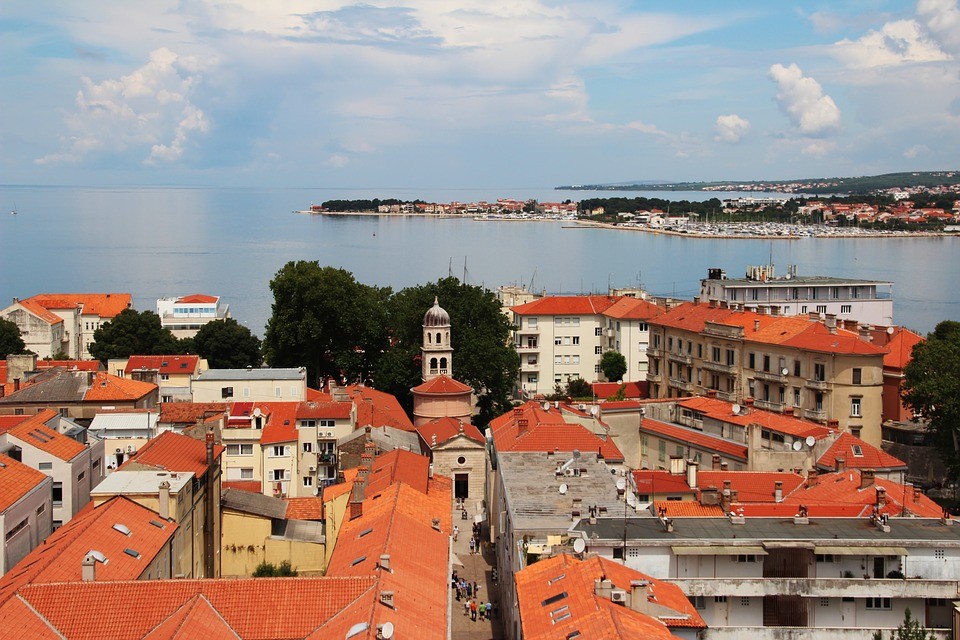
Zadar is a coastal city of Dalmatia and is worthy of praise. Year after year its cultural and fun offerings are on the rise; and, with one of Europe’s major low-cost airlines (Ryanair) landing in its airport, surely it won’t be long until Zadar stops being an infrequently visited destination.
In the 9th century B. C., Zadar was already inhabited by the Illyrian tribe of Liburnians. At the end of the 3rd century B. C., the Romans began their long 200 year battle against the Illyrians and around 1st century B. C. Zadar became a Roman colony. It wasn’t a particularly important place for the Romans, but when the Empire was divided, Zadar became the capital of Byzantine Dalmatia. In the 6th and 7th centuries the Slavs settled in the city and Zadar ended up giving in to the authority of the Hungarian-Croatian kings.
The rise of the Venetian Empire meant that over the coming two centuries, Zadar suffered under constant attack of the Venetians, who were seeking to increase their influence on the Adriatic’s commercial interests. Later, four popular uprisings failed, but in 1202 the Venetians managed to plunder the city and drive out its inhabitants with the help of the French crusaders. The people of Zadar rebelled numerous times but in 1409 the city ended up being sold to Venice along with the rest of Dalmatia.
Zadar’s economic growth came to a half during the Venetian reign due to Turkish attacks and the frequent Venetian-Turkish wars that caused the collapse of the city walks in the 16th century. With the collapse of Venice in 1797, the city was overtaken by the Austrians who brought in more Italians to administer the city along with the Italianized aristocratic oligarchy that already existed in Zadar. The Italian influence lasted until well into the 20th century, to Zadar remained excluded from the kingdom of Serbians, Croats and Slovenes and remained an Italian province. When Italy surrendered to the allies in 1943, the Germans occupied it which resulted in an allied bombing that destroyed practically 60% of the old town. The city was rebuilt following the guide of the original urban layout.
History repeated itself in November 1991, when the Yugoslavians launched an attack with their missiles and besieged the city for three months. The city’s residents were practically confined to their houses with insufficient food and water. Although in 1993 the Croatian army made the Serbian artillery regress, the city continues to be related to nationalists and extreme patriotism.
However, as the war wounds are hardly visible, Zadar’s narrow, pedestrian, stone streets have come back to life and are ideal for strolling.
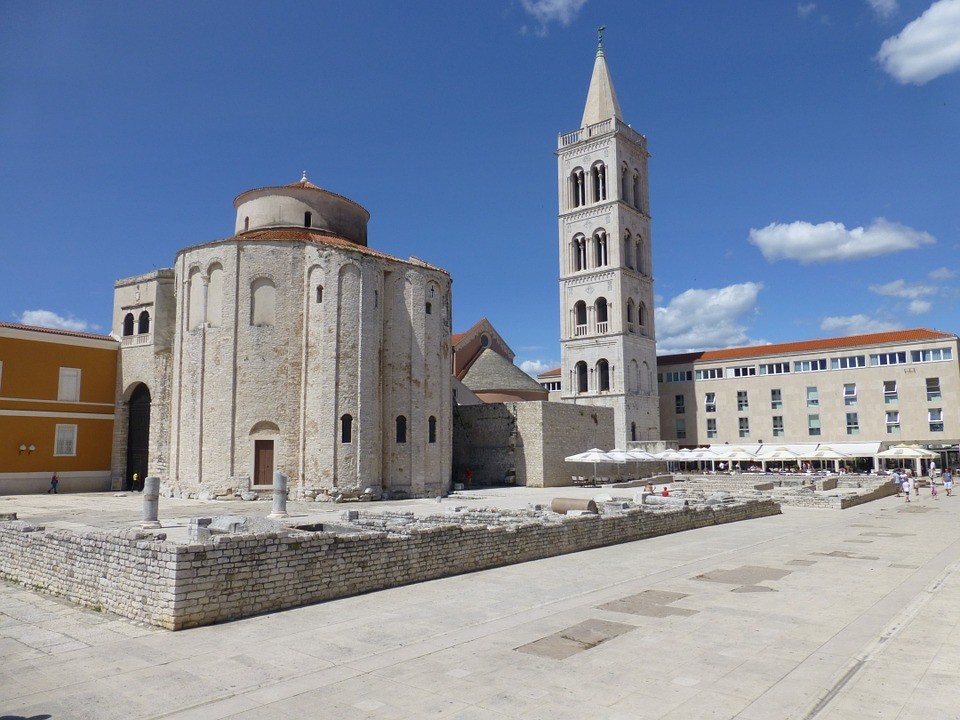
Zadar sits on a long peninsula (4km long and only 500m wide) that separates the port, on the east, from the Zadarski Canal, on the west. The old town is situated in the north-western part of the peninsula and includes the port and the bay of Jazine. In the old town, a tourist can visit museums, churches and monuments. The majority of the travel agencies are found in Siroka. The boats in Jadrolinija are moored in the north-eastern port, linked to Obala Kneza Branimira by a pedestrian bridge that crosses the bay of Jazine. If you continue heading north-west you will arrive at Borik marina, located 3km from the old town. The train and bus stations are a 15 minute walk from the port and from the old town, heading south-west. From the train and bus stations, both Kralja Dmitra Zvonimira and Zrinsko Frankopanska lead to the old town.
For things to see, I would highlight... The city walls since they provide a good historical approach to Zadar. You can start the walk through the eastern walls that are close to the pedestrian bridge, the only remains of ancient Roman and early medieval fortifications (many of the walls were built during the Venetian reign). Close by there are four ancient gates to the city: to the north-west there is the San Roque gate, then the gate to the port. The latter was built in 1573 and still shows the Venetian lion and part of a Roman triumphal arch, and has a commemorative inscription of the Battle of Lepanto in 1571 in which the Austrians gave the final blow to the Turkish army. In the south-west there is the gate to the city, the most elaborate of the all that was built in 1543 during the Venetian rule. Amongst its Renaissance elements, the Venetian lion can be found.
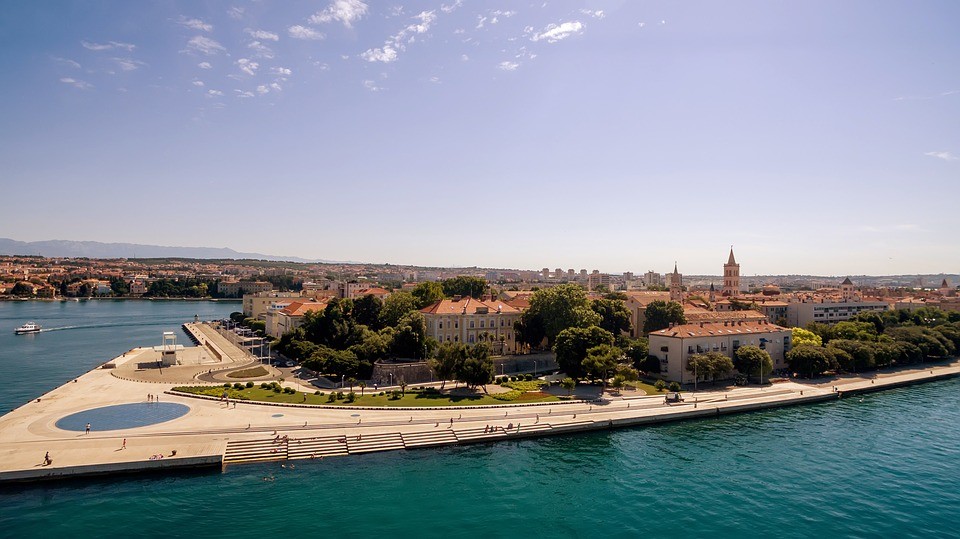
The “5 Wells Square”, behind the St Simon Church, was built in 1574 on the site of an old church that held a cistern with five wells that provided Zadar with water in 1838. It’s little sister, Trg Tri Bunars (5 Wells Square), is found just on the other side of the city, where the excellent Arsent is. This reshaped warehouse was abandoned for many years before being transformed into a cultural centre where you’ll find a bar, a restaurant, several shops (music, food, wine), a tourist office and a stage where theatre, live music and all sorts of shows are shown. Next to the square is the Garden bar and club, which has turned this area into a mini cultural epicentre.
Then we can pass by St Simon’s Church. This church was built during the 16th and 17th century on land where there was previously an old church. The sarcophagus of St Simon is a masterpiece of medieval gold work. It was commissioned in 1377 and the coffin is made from cedar wood and covered with very elaborate gold-plated silver embossing both inside and out. The embossments on the central part show the presentation of Jesus in the Temple, a copy of Giotto’s fresco that is found in the Capella del Varena in Padua, Italy. Other embossments show scenes of the lives of saints and King Ludovico’s visit to Zadar. On the lid lies a picture of Saint Simon.
The centre of public life in Zadar was the Narodni Trg. On the west side of the square stands the city watchtower, a late Renaissance construction from 1562. The clock tower was built in 1798, during the Austrian rule. The public edicts and the sentences were read in the lodge, situated on the other side of the square, and now there are exhibitions.
There is also the Archaeological Museumo. This museum was closed for restoration when it was visited for the last time. There are treasured ceramic fragments that date back to the Neolithic; bronze swords; jewels and ceramics from the Liburnian era; a model of the Roman Zadar; and statues of the Emperors Tiberius and Augustus.
There is also the exceptional Museum of Ecclesiastical Art, located in the Benedictine monastery in front of the Saint Donato Church. It presents an excellent display of relics and religious paintings. In the first room, as well as the goldsmith’s pieces, it is worth highlighting a painting of the Virgin from the 16th century, which also takes centre-stage in the second room, above all in the marble sculpture and canvas by Paolo Veneziani.
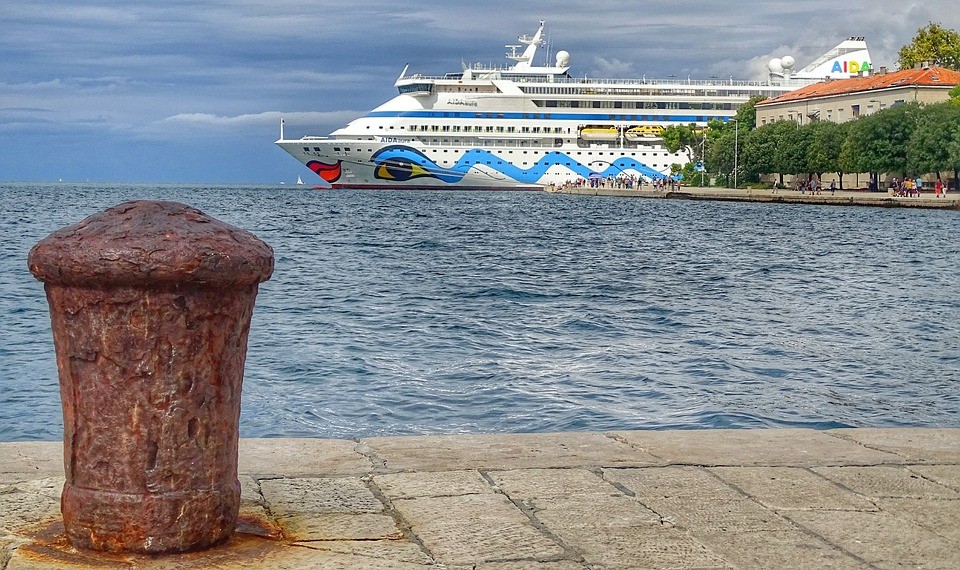
The Church of St. Chrysogonus
You’ll be left astonished by the Church of St. Chrysogonus. This beautiful church was formerly part of a Benedictine monastery which was destroyed by the allied bombs in 1944. It has a baroque style altar built in 1701 with Byzantine frescoes on the north wall and on the northern apse. The problem is that they are poorly preserved.
We also have the National Museum and Art Gallery that is in theBenedictine monastery of the St. Krzevar Church. It is an excellent historical site. There are scale models of Zadar in different periods, and old paintings and engravings of many coastal cities. The ticket also allowed you access to the Galeru de Arte which schedules temporary exhibitions of local artists.
The Franciscan Church and Monastery is the oldest Gothic temple in Dalmatia. It was consecrated in 1280 and the inside has several Renaissance elements, such as the beautiful chapel of St. Anthony that holds a 15th century wooden crucifix. In the sacristy there is a tombstone commemorating the anniversaries in the history of Zadar: the 1358 agreement by which Venice renounced the rights over Dalmatia in favour of the Hungarian-Croatian King Ludovico. It is worth seeing the large painted Romanesque crucifix which is found in the treasure rom, behind the sacristy. The monastery is called San Donato in honour of the saint.
My God, my gosh, my days. The incredible (and the world’s only) Sea Organ (Morske Orgulje) is a MUST SEE. It was designed by the local architect Nikola Basic, and deserves to be recognised as one of Croatia’s most memorable places of interest. The inside of these stone stairs that lead to the sea is pierced with a pipe system and whistles that give off melancholic sighs when the movement of the waves causes the air to come out of their orifices. The effect is completely unique and hypnotic and the “music” reaches its most powerful point when a boat or a ferry passes. You can dive into the sea from the steps of the promenade and listen to the sound of the Sea Organ whilst floating.
To get from the peninsula of the old town to the mainland, there’s nothing like crossing the water in a small wooden boat and at the same time experiencing an ancient tradition of Zadar, the barkarioli. Transporting people between the two ports of Zadar in small wooden boats is an 850 year old tradition that has lost strength since the pedestrian bridge was built, but the boatmen, or obarkariolital as they are known locally, don’t give up easily. Neither do they have to give up: it’s still the locals’ favourite method of transport. It’s a short journey (80m in a few minutes) and cheap, and it wins against the polluting buses. But more than anything else, it is a romantic experience.
There’s a swimming area with trampolines, a small park and a caféon the promenade at Kralja Dmitra Zvonimira, with pine trees and grassy areas on each side. Walking along this path leads you to the beach in front of the Hotel Kolovare; then, the path continues parallel to the coast for a further kilometre.
Any travel agency in the city provides information about the tourist trips to Telaáéica Bay and the beautiful Kornati Islands, trips that include food and the chance to bathe in the sea or a salt lake. Nothing is wasted on this experience as it’s the only way to see the archipelago formed by 101 islands, islets and uninhabited and arid cliffs.
There are also excursions from Zadar to Paklenica National Park, Krka National Park or the Plitvice Lakes National Park.
It’s good to visit Zadar from July to mid-August. The Zadar Dreams theatre festival takes over the parks and squares in the city with original theatre performances between the 7th and 14th of August.
Since 2006, The Garden Festival has been celebrated in the nearby Petrcane, and it is becoming one of the most popular music and dance festivals in Croatia. According to its website, it’s more about “quality than big names” and it is held in the Barbarella night club, where you can dance, bathe, sunbathe or sit under the shade of a pine tree to the constant rhythm of music. This takes place from the 4th to the 6th of July.
You should try to be there when there’s the Full Moon Festival in August. The docks are lit up with torches and candles, there are stands with local delicacies and boats that are used as floating fish markets. It’s worth seeing.
Other events that stand out are Musical Evenings (July) in the San Donato Church and the Choir Festival (October).
Although the city has a small hostel and some houses that rent rooms, the majority of visitors stay in the tourist area of Borik, where they arrive by bus that goes to Puntamika (every 40 minutes from the bus station). Borik has hotels, a hostel and a campsite.
The travel agencies provide accommodation in certain houses.
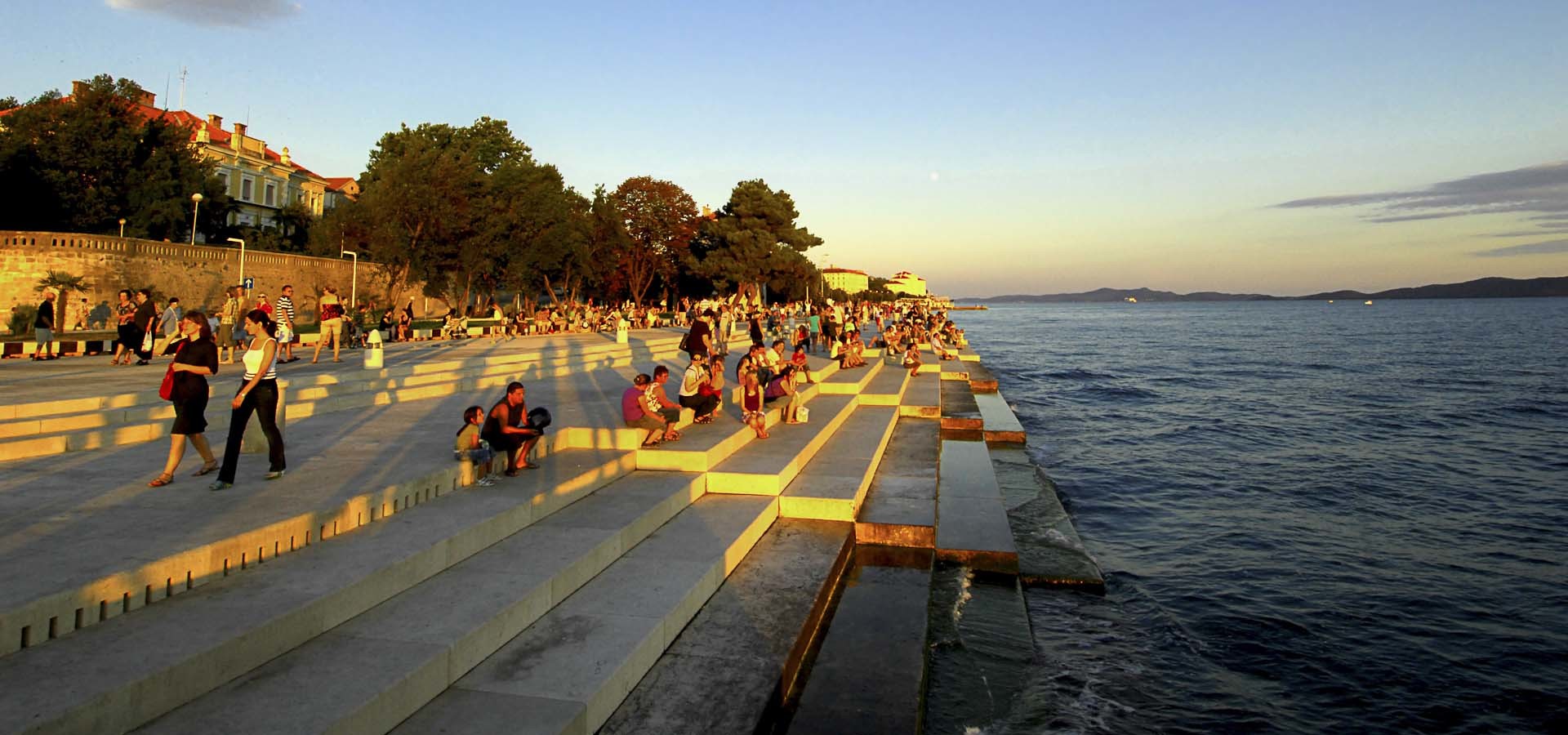
Among the cheapest:
The Zaton, which is a huge camping complex in Nin on a sandy beach 16km northwest of Zadar, with a capacity of up to 5000 people. The landscape isn’t particularly beautiful (the land is flat and uninteresting) but the facilities are first class. They also rent apartments and mobile homes. There are 8 buses per day marked “Zaton” that leave from the bus station (less frequently at weekend) and go to the village of Zaton, around 1km from the campsite.
The Zadar Youth Hostel. Ideal for backpackers, with simple but clean rooms. Some have wooden floors that creak endearingly. Many were renovated in 2006 and are quite modern. The staff are friendly and speak several languages and Borik beach is only a few minutes away. There is internet access.
A little more expensive, we have the Venera Guest House. Also known as the Jovié Guest House, this is the only option in the centre. Tiny rooms with disproportionate wardrobes. The doors aren’t numbered but each room has a bathroom, the beds are good and the atmosphere is quite calm. Breakfast is not included in the price. Anyone who is unable to get in contact with Gojkom the owner, can reserve a room through Aquarius Travel Agency.
The Hresc Villa, which is the prettiest mid-priced option in Zadar, occupies a cheerful looking salmon coloured building located on the bay. It has elegant rooms that are painted in pastel colours, the beds are luxurious paradises for sleep, and the swimming pool boasts beautiful views old the old town. The suites are excellent value for money, some have huge terraces. It’s also a stone’s throw away from the restaurants, places of interest and nightlife in Zadar.
For something crazy: Garden Wing Adriana where all of the rooms in this 19th century mansion are tastefully decorated. It was formerly known as the Hotel Adriana Select and the rooms are classed as junior suites and fulfil their promise of luxury. It’s an extremely relaxing place in Borik, with white furniture, smooth Indian detailing, scented candles and infinite spa treatments. There is a swimming pool, four tennis courts and a beautiful beach at the end of the splendid garden. The staff are friendly and discreet.
To eat, wow, I got full here. I’ll tell you where I did so. Firstly, Zalogajnica Ljepotica which is the city’s cheapest establishment, prepares three or four daily dishes at fabulous prices in a setting that would fit perfectly into a Kaurismäki film (that is, one rudimentary and sad dining room with a pot-bellied waiter/chef who, with a sleepy face, brings the steaming dishes to the tables). The food is fabulous and homemade, and the dishes are usually squid ink risotto, tomato and seafood pasta, and some sort of meat dish.
La Trattoria Canzona is a fantastic small trattoria in the old town, with red and white chequered table cloths, friendly waiters and countless locals who are dying to know what the dishes of the day are. The ‘lapasticada’ (stewed veal with wine and spices) is unmissable, and is served with juicy gnocchi and a crisp green salad.
The Ova Ribara is an old “fishermen’s dining room”, which has been magically converted into a minimalist, fashionable space. However, the “two fishermen” still holds a menu with typical foods from former times. The wood-fired pizzas (very well-liked by the locals) and meats dominate the menu, although there are some pasta and fish dishes. Also, there is a decent wine menu.
Niko which is an institution in Zadar is well-known for its fresh fish (grilled and sprinkled with a soft, aromatic olive oil), for the large wine menu and for its pasta and seafood dishes. It has a large terrace with views of the dazzling Adriatic. Niko is located in Puntamika, on the Borik Peninsula.
Finally, there is Kornat which is undoubtedly the best restaurant in Zadar. Although it’s elegant and modern, with wooden floors and modern furniture, and there is impeccable service, it’s real asset is the food. They serve the smooth Istrian monkfish with truffles, a creamy squid and salmon risotto, and fresh fish prepared with simple ingredients to ge the most out of its flavour. The house wine, Babic, is also not to be missed, and it’s worth leaving room for dessert (you have to try the pistachio and caramel cheesecake).
Aside from the restaurants, you can say without a doubt that Zadar’s market is one of the best in Croatia. Those who have a kitchen in their accommodation are lucky because they can stock up on fresh, seasonal products at affordable prices. In spring and the beginning of summer, the stalls have some wonderful bunches of wild asparagus, whilst in summer they display juicy watermelons, cucumbers and tomatoes in abundance. There are also stalls where the vendors agree to haggle. In addition, you will also find Pag cheese, and on the fish market you will see the catches of the day and many more delights. Although travellers won’t buy anything, the visit will remain a delicious memory.
There are also plenty of places to have a drink in Zadar, from the terrace cafés to the trendy bars, and almost all of them fill up in summer. Nobody should forget to try the local cherry liqueur, maraschino.
The Arsenal which was a renovated warehouse is now home to a magnificent cultural centre, with a big bar-lounge/restaurant/concert hall in the centre that has a little stage for live music and several shows. The central space is surrounded by shops with a daily crowd of people and the bar fills with youngsters every night. It’s also a great place to have breakfast.
The Caffé Bar Lovre is a beautiful, small and central café with a huge terrace in Narodni Trg (which shares a terrace with the neighbouring cafés). Its main attraction is the remains of the 12th century San Lovre Church that sit behind it. You can enter and have a look around, before or after a coffee. It is a fabulous place to have breakfast croissants and pastries or to relax after so many visits.
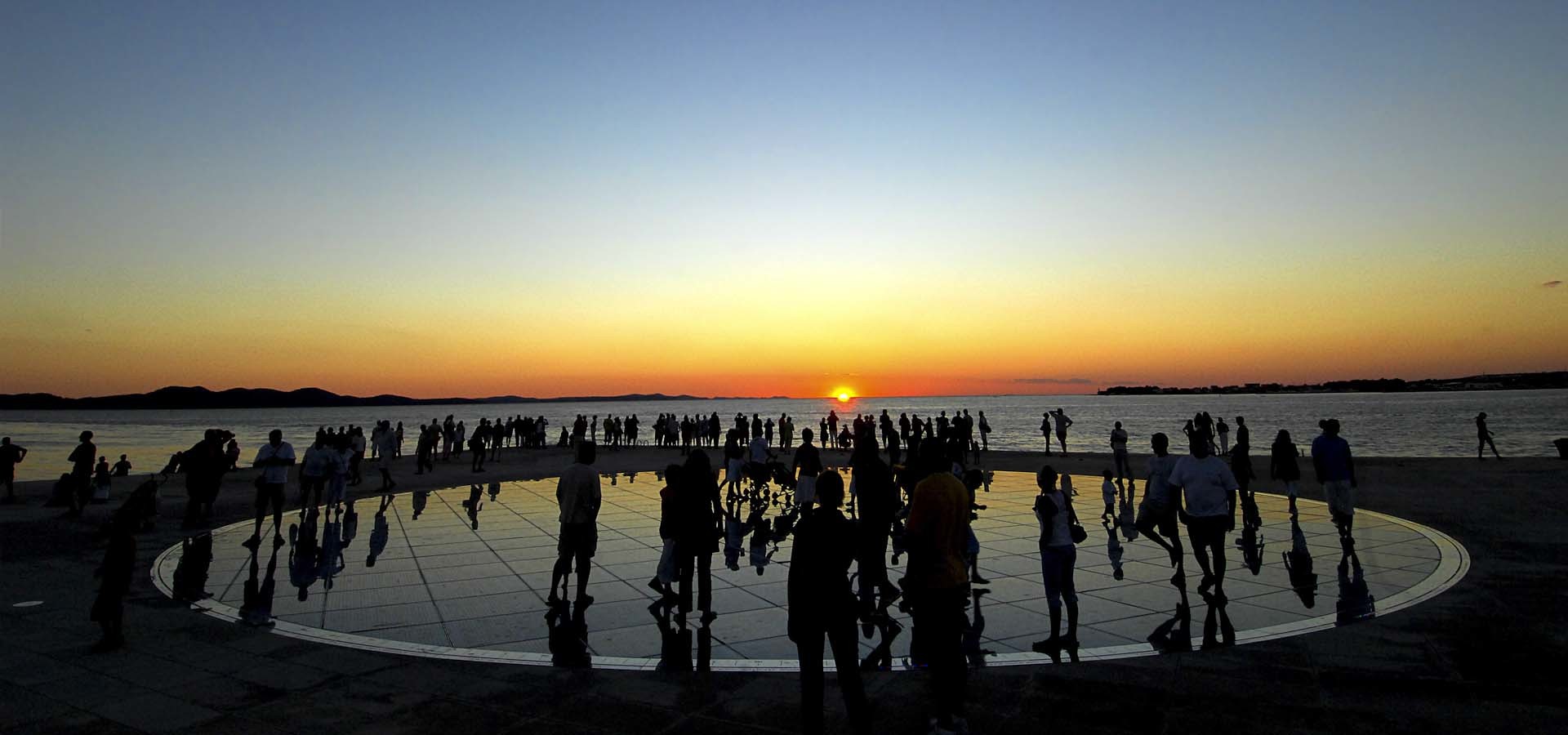
As for going out in Zadar, I have to tell you that many young Croatians consider Zadar to be “a really cool place” because it has night-time options that are not available anywhere else: above all because of Garden. It is owned by UB40 manager Nick Colgan and drummer James Brown, who also run it. They went to Zadar and liked it so much that they decided to buy this traditional enclosed garden, install a first-class sound system and invite their DJ friends to animate the city’s nightlife. They have also opened Barbarella’s, Garden’s more secluded brother, and more boisterous. During the day the atmosphere is calm, with board game and people lay on the sunbeds outdoors, but at night time the party never ends. It’s not to be missed!
As I said, Barbarella's, which opened in May 2008, is a more ambitious and spacious project for the owners of Garden since it is used as a framework for The Garden Festival in July and a summer nightclub schedule that lasts throughout summer. It basically consists of a 1970’s retro structure that has been carefully remodelled and equipped with a good sound system, beach bars with infinite space to go wild without limits. Tickets for the Argonout boat party sells out within minutes. There is also a hotel attached in case anybody wishes to stay a few days.
What is this 'MARASCHINO'?
Since the name is everywhere in Zadar and it’s impossible not to notice its beautiful distillery (an important emblem of the city), the tourist can be excused for asking this question. Maraschino is a delicious drink that the locals always try to make visitors try.
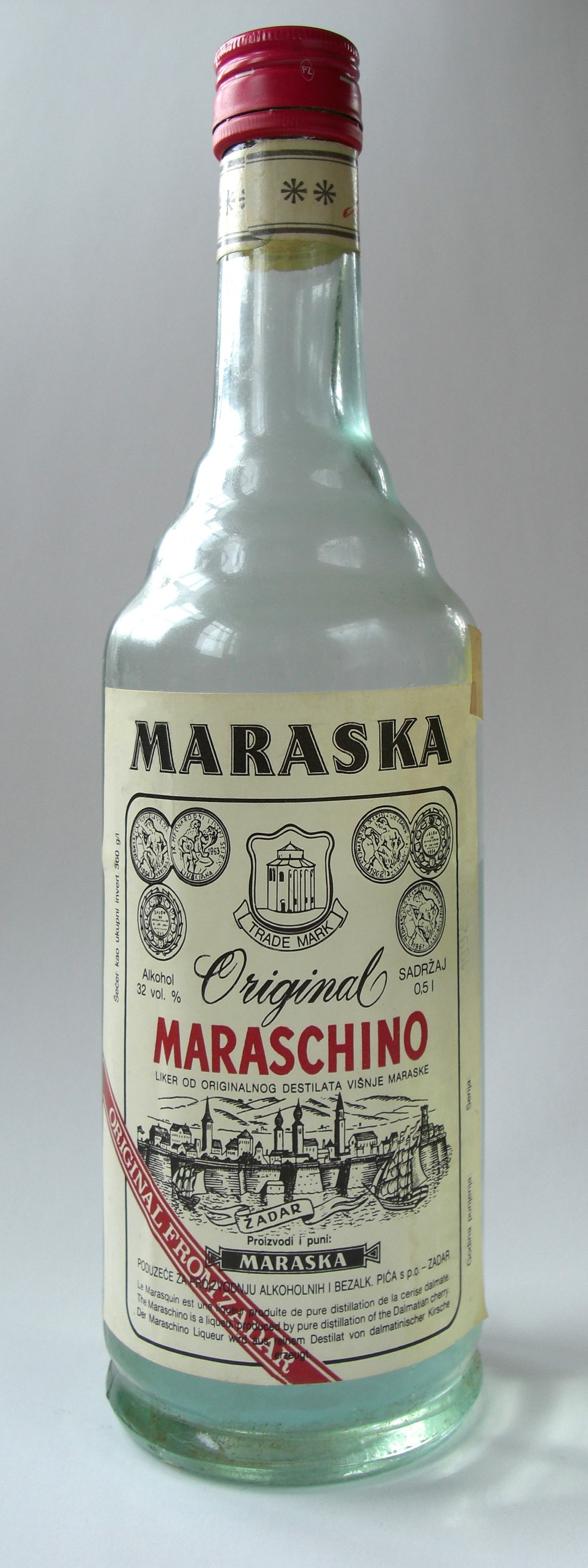
The story of maraschino began with the birth of the Dalmatian sour cherry (also known as maraska) brought years ago from the surrounding areas to the Caspian Sea. Apparently the maraska is sweeter, meatier and more nutritious than any other cherry and grows wonderfully next to the Adriatic. At first it was used as a medicinal liquor and Dominican friars bottled it up in the 16th century, but it soon became fashionable as a regular drink and was commercialised during the following two centuries.
But the real revolution happened with the collapse of the Venetian Republic. Zara (Zadar) became the capital of Dalmatia, and the Austrians, who had come to power, were brought to consuls and representatives throughout Europe. The consular representative of Sardinia, Girolamo Luxardo, arrived in Zadar and, along with his wife, and tasted the maraska liquor for the first time. Enchanted by its flavour, Luxardo’s spouse decided to try to perfect it, and her recipe had to much success what the couple established the first Luxardo distillery in 1821: the famous Maraschino building. The third generation Luxardo’s built a modern distillery, and the original old building, which is opposite the old town, became office space.
During the period of the former Yugoslavia, the manufacturing of maraschino was nationalised, and the only surviving member of the Luxardo family moved his business to Veneto, Italy. Nowadays, maraschino is once again privately owned and offers jobs for many people. Despite the hard knock that the production suffered during the recent war, there are now once again thousands of cherry blossoms in Zemunik, close to Zadar airport, and maraschino is more famous than ever.
Big hug, everyone!
Photo gallery
Content available in other languages
Want to have your own Erasmus blog?
If you are experiencing living abroad, you're an avid traveller or want to promote the city where you live... create your own blog and share your adventures!
I want to create my Erasmus blog! →
























Comments (0 comments)